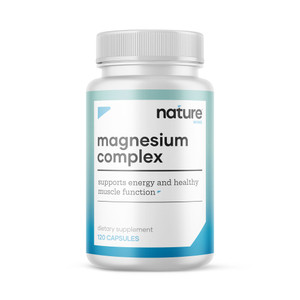Dr. Bryan Ardis Explains Why Prostate Pro

GET FREE SHIPPING ON ALL DOMESTIC ORDERS $149 AND ABOVE!!
Dr. Bryan Ardis Explains Why Prostate Pro
Unlock the Power of Prostate Pro!
Our advanced formula integrates the potent benefits of saw palmetto extract with a host of essential nutrients and herbal extracts crucial for the optimal maintenance of prostate and lower urinary tract wellness.
By harnessing the power of these meticulously selected ingredients, our formula provides comprehensive support, addressing various aspects of prostate healthdd and promoting overall urinary function.
Experience the difference with Prostate Pro today!
IMPORTANT INFORMATION
DIRECTIONS
For best results we recommend taking two (2) capsules daily.
Pregnant or Nursing: Please consult your healthcare practitioner before use.
INGREDIENTS
Saw Palmetto Berry Powder (45% Free Fatty Acids) - 450mg, Boving Prostate Powder - 188mg, Pytosteral Extract 70% Betasisterol (Pine tree trunk) - 176mg, Stinging Nettle Root Extract (Urtica Doica) - 154mg, Pumpkin Seed Extract - 120mg, Uva Ursi Leaf Extract (Std. to 20% Arbutin) - 16mg, Swedish Flower Pollen Standardized Extract - 8mg.
Other ingredients: Vegetable Cellulose (HPMC), rice hull, silicon dioxide
RESEARCH STUDIES
I ordered this for my husband, who has a very large prostate and the doctor threatened him with surgery on the last visit. I laughed. My husband loves this, he has many fewer night trips to the bathroom, usually one at most, versus several before, and his stream is very strong now. Can’t wait for his next urology visit.
Oh my goodness, truly I have never been so excited in my life. My husband has wrestled with Enlarged Prostate and high PSA numbers for so many years. Most recently his PSA was nearly 14. After listening to Dr. Ardis' audio on this product, we bought three bottles and my husband started taking them immediately. Two and a half weeks later, his PSA is down to 9.5. It's been a long time since it was that low and that's only after 2.5 weeks! Thank you, thank you, thank you, Dr. Ardis, we are SO encouraged!!!
This product has been working for my husband for over 1 year and we couldn't be more pleased.
When I started on Prostate Pro, I was up 1 x a night at the most, but not every night. I took the product for roughly 6 months. I wasn't sure anything had changed. I may have reduced the number of nights I had to get up but since I didn't get up that often I wasn't sure it was helping. The whole reason I went on it was a weak stream/not fully emptying my bladder. After being off of it for a few months, I am having worsening symptoms than ever—primarily a weaker stream. So, I'm giving it another go.
It's only been a week. No change noticed yet.
My work requires me to sit for long periods of time it started getting very uncomfortable for me. Urination flow was also becoming a problem. After one month on my first bottle, I was significantly better. Great product!
I purchased this for my 85 year old father and my husband. It has made a huge difference in both of them. I even recommended it to my fathers personal trainer, he loved it too! Thank you for making such a great product!
I am a 66 year old male in Australia. I have used the std Saw Palmetto of 380mg daily for approx 6 -7 years and waking up approx 3-5 times nightly. So after trying Dr Ardis product I noticed a difference after about 3 days taking 2 caps daily (morning & night). I still get up for a P but usually one and on ocassions 2 times. Early days yet - but I expect this will get even better after continued use. Thank you Dr Ardis. God bless you immensely for your ethic, morals, Godliness and your desire to help people like me/us. You are blessed. PS - I have spoken to my regular GP who showed no interest in natural products - one can only try. Thank you again SIr.
on 2 bottle but haven't noticed much improvement